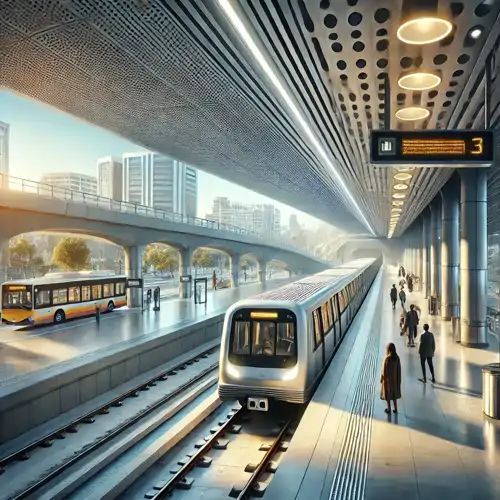Public Transport in Spain: Advantages, Disadvantages, and Key Features
In Spain, public transport is considered one of the most convenient and accessible ways to get around. The country has well-developed metro, bus, and tram networks, as well as suburban trains in some cases. However, passengers often have doubts and questions: which type of transport is the most economical, fastest, and safest? How can unnecessary expenses, delays, and unforeseen issues be avoided? Below, we analyze the main challenges faced by travelers and residents, as well as their solutions. Additionally, we examine key aspects related to infrastructure, environmental impact, and comfort.
Common Issues When Using Public Transport in Spain
- Lack of knowledge about fares and ticket types. Spain has multiple fare zones, and each city has its own ticketing system. Passengers may struggle to choose the right ticket and end up overpaying.
- Difficulty in planning routes. Not everyone is aware that there are apps and services that help calculate travel routes and durations. This is particularly relevant for small towns where intercity trains do not operate.
- Concerns about safety and cleanliness. Some passengers worry about vandalism, pickpocketing, and the lack of security measures on public transport.
- Lack of information about service hours. Tourists and new residents often do not realize that many Spanish cities offer night transport services and, in some cases, round-the-clock operations.
- Limited accessibility for people with disabilities. While Spain has implemented convenient solutions such as elevators and ramps, some passengers question whether these features are available at all stations.
To avoid these issues, it is essential to understand the structure of public transport, its features, schedules, and fares. Below, we explore different transport types, highlight key points, and provide tips to save money and prevent inconvenience.
The Metro in Spain: How Well Developed Is It and What Are Its Benefits?
In major cities like Madrid, Barcelona, Valencia, Bilbao, and Seville, the metro plays a crucial role in urban mobility. Its key advantage is speed and the absence of traffic congestion:
- Madrid Metro. One of the longest in Europe, with 13 lines and approximately 300 stations. High train frequency reduces waiting times and optimizes travel efficiency.
- Barcelona Metro. Managed by TMB (Transports Metropolitans de Barcelona – Metropolitan Transport of Barcelona) and FGC (Ferrocarrils de la Generalitat de Catalunya – Catalonia Railways). It has 11 lines and 164 stations, covering the main districts and beaches of the city.
- Valencia. The metro system is integrated with trams and commuter trains, making travel within the city and to nearby municipalities convenient. Manises Airport is connected to the city center via metro lines 3 and 5.
- Bilbao. Its stations were designed by renowned architect Norman Foster, featuring a futuristic and functional aesthetic.
- Seville. The city has a single metro line with 17 stations, which is sufficient to serve the main transportation needs. It was inaugurated in 2009.
A common issue with the metro is the complexity of its line maps and fare systems. The best solution is to review the metro map in advance, use digital information boards at stations, or rely on navigation apps for route planning.
Buses: Advantages, Disadvantages, and Regional Specifics
Spain's bus network meets all passenger needs, from short urban trips to long-distance journeys:
- Urban buses. They feature well-structured routes and frequent departures in major cities, making them a great option for traveling to areas not served by the metro.
- Intercity routes. There are over 4,000 bus routes connecting more than 5,000 towns and cities. Many people prefer buses for regional travel due to affordable prices and different comfort options.
- Regional lines. These operate in areas where trains and major intercity buses do not run, serving as the only transport option in some remote locations.
A common challenge is selecting the best intercity bus option and finding the right schedule. The solution is to plan trips in advance and compare alternatives. In some cases, Blablacar (a car-sharing service) can be a more affordable choice if a driver with a similar route is found.
Environmental Impact of Transport
Many people are concerned about CO2 (carbon dioxide) emissions and energy efficiency. Public transport, unlike private vehicles, reduces emissions per passenger by carrying large numbers of people per trip. While electric cars also contribute to reducing pollution, the widespread use of buses and trains remains the most sustainable option.
Conclusion: How Efficient Is Public Transport in Spain?
Public transport in Spain is well-organized and allows convenient travel to most destinations. Metro, buses, and trams serve all key urban areas, while intercity routes offer an economical way to travel between regions.








